When it comes to naming my favorite flower, I’m pretty hard-pressed to do so but irises rank near the top. Right now, they are out in their glory with both diminutive and understated blooms as well as those adding confirmation to the Big Bang theory with blossoms big enough to bowl one over.
Legend claims Iris to be the messenger of the gods and the rainbow linking the earth to other worlds. Throughout recorded history, the iris has appeared in myths, legends, heraldry, tapestries and as a religious symbol. It was the flower of both priests and princes and white irises were once planted on the graves of ancient soldiers.
Of the 200 plus species, three are most commonly grown in New England gardens. They are the tall-bearded, Siberian and Japanese irises. Iris flowers vary greatly in shape, color and size but their overall structure is similar. Each flower consists of three upper petals called standards and three lower or outer sepals referred to as falls. Irises are divided into two major groups, those which arise from rhizomes, which are horizontal stems growing at or slightly below the soil surface, and those growing from bulbs.

Peach iris. Photo by dmp, 2019
Some gardeners lament the relatively brief annual flowering period of irises. And it is true that even in good years weather-wise you cannot expect more than two or three weeks of a spectacular show. These folks can be comforted to some extent by choosing early, mid-season and late species and varieties of irises so the blooming period is prolonged. I like to think about it more like a special holiday one looks forward to each year. It just wouldn’t be appreciated as much if it occurred more often. And, irises are just too magnificent to be taken for granted.

Bearded irises at UConn. Photo by dmp, 2019
Bearded irises are fairly adaptable to soil type but demand a well-drained site and full sun for most spectacular bloom. They prefer soils amended with organic matter and with a pH of around 6.5 so add limestone if your soil is acidic. Contrary to popular belief, the bearded iris is a heavy feeder. Provide them with ½ cup of an all-purpose organic or chemical fertilizer per large clump in early spring and half as much in mid-July after their dormant period. They can be divided any time from July 4th until Labor Day. Growth from new fans will be from the leaf side so set them in the direction you want them to grow. Rhizomes can be covered with soil but never more than one inch deep. Leave the tops of the rhizomes exposed on the surface if a thin layer of mulch will be applied.
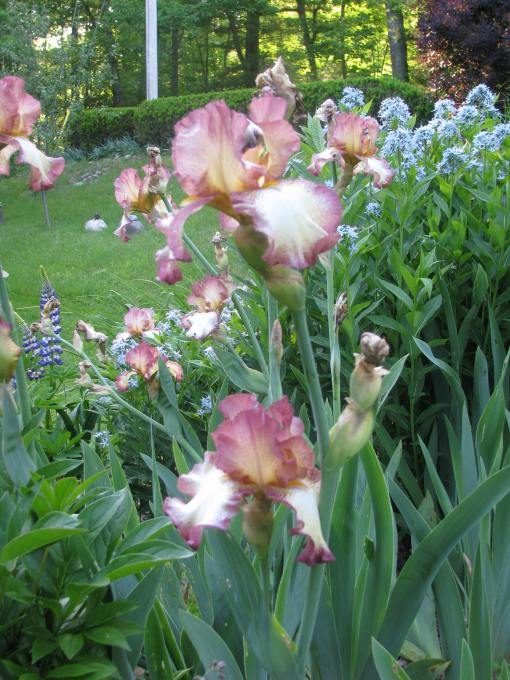
Iris ‘Cinnamon Girl’ with amsonia and lupines. Photo by dmp, 2009
Siberian irises are native to Central Europe and Manchuria, not Siberia as the name may imply. These plants produce a multitude of tiny rhizomes forming very dense clumps of slender grass-like leaves. Because the rhizomes are so small, iris borers are not tempted by them. Siberian irises can go a long time without division but you will get more flowers if you divide every 3 to 4 years.
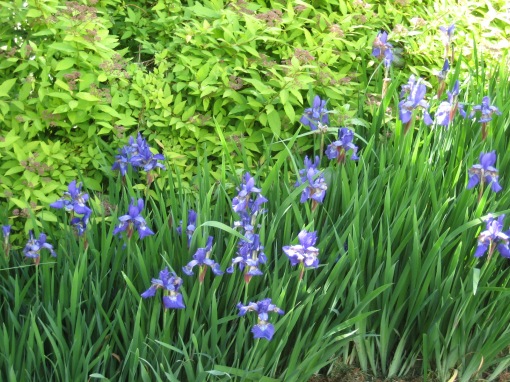
Siberian irises, Photo by dmp, 2018
Japanese irises look finicky but are quite easy to grow. They prefer a rich, organic, acidic soil. Rhizomes are set 2 inches deep. Japanese irises also need good drainage but they are not drought tolerant. A moisture retentive soil or supplemental irrigation during dry periods will give you best results.
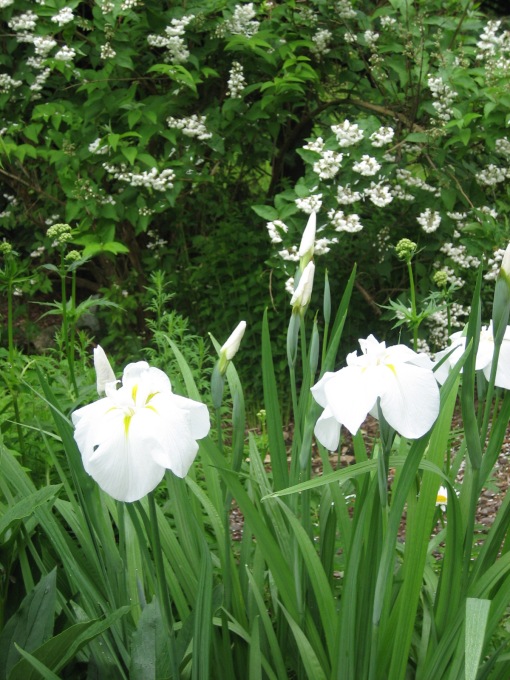
Japanese irises in white garden with beauty bush in the background. Photo by dmp.
The petite crested iris (I cristata) is named for the raised crest along the centerline of each fall. This species tolerates part shade and should be fertilized regularly because it only produces short feeder roots. Give it a rich soil and it will thrive.
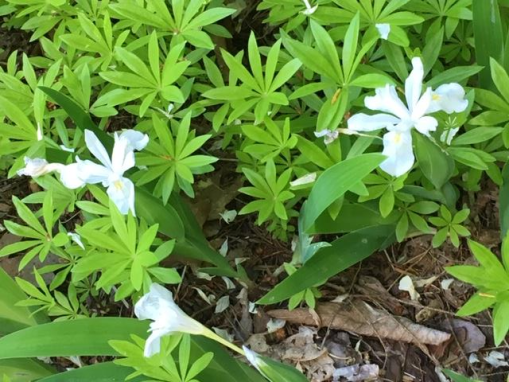
Iris cristata with sweet woodruff. Photo by dmp, 2019.
Bulbous I. reticulata in blue and violet shades along with sunshine yellow I. danfordiae are planted in the fall for very early spring blooms. A well-drained soil and protected site will provide you with earliest color.
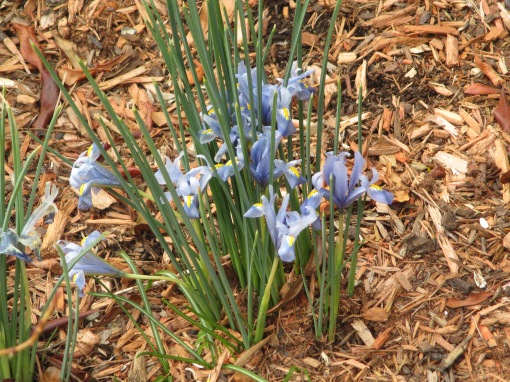
Iris reticulata blooms in early spring. Photo by dmp.
While their season of blooms is not long, irises can be quite spectacular and are a colorful and eye-catching addition to any perennial planting.
Here’s to a great gardening season,
Dawn P.